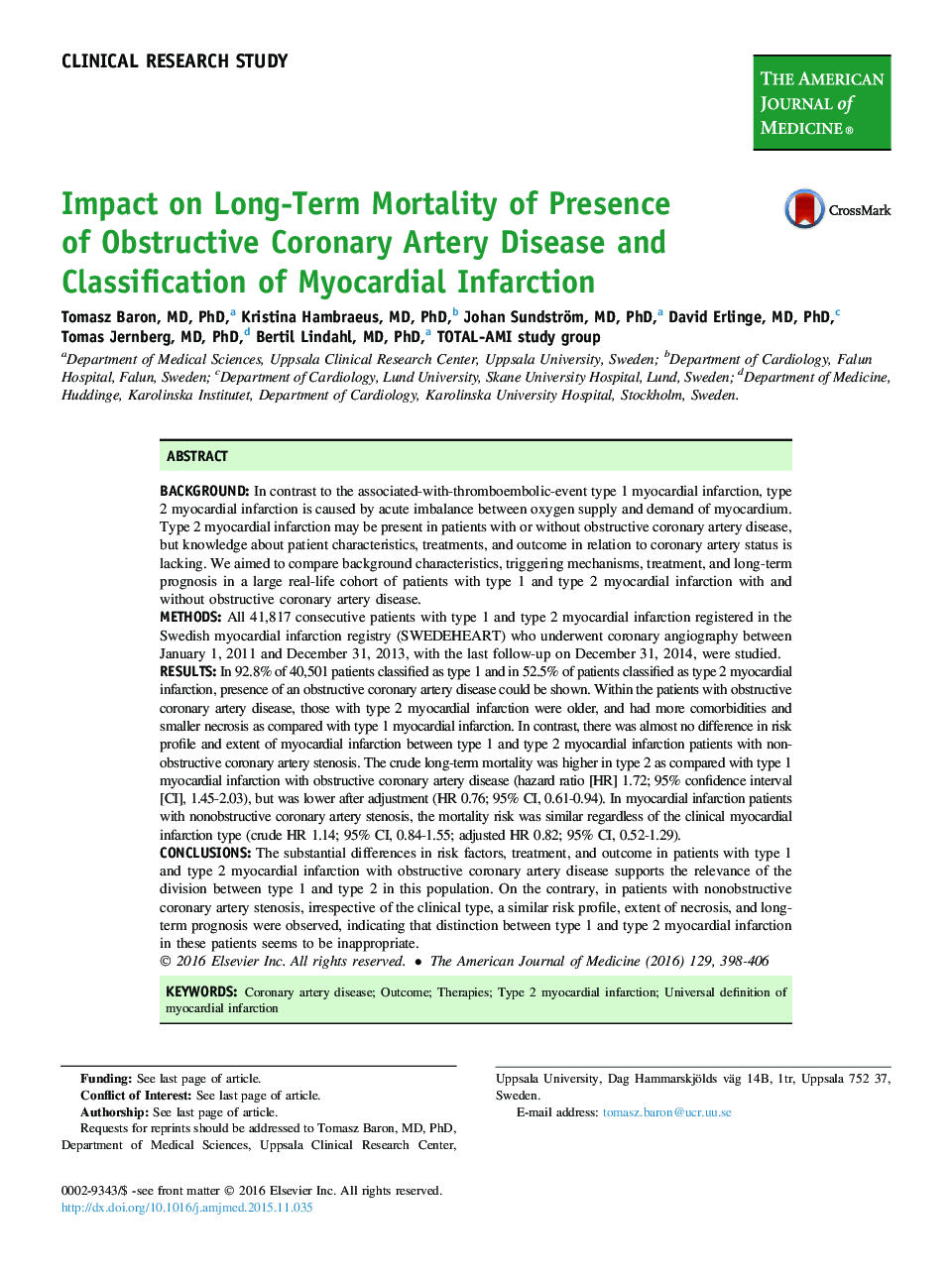| Article ID | Journal | Published Year | Pages | File Type |
|---|---|---|---|---|
| 2718814 | The American Journal of Medicine | 2016 | 9 Pages |
BackgroundIn contrast to the associated-with-thromboembolic-event type 1 myocardial infarction, type 2 myocardial infarction is caused by acute imbalance between oxygen supply and demand of myocardium. Type 2 myocardial infarction may be present in patients with or without obstructive coronary artery disease, but knowledge about patient characteristics, treatments, and outcome in relation to coronary artery status is lacking. We aimed to compare background characteristics, triggering mechanisms, treatment, and long-term prognosis in a large real-life cohort of patients with type 1 and type 2 myocardial infarction with and without obstructive coronary artery disease.MethodsAll 41,817 consecutive patients with type 1 and type 2 myocardial infarction registered in the Swedish myocardial infarction registry (SWEDEHEART) who underwent coronary angiography between January 1, 2011 and December 31, 2013, with the last follow-up on December 31, 2014, were studied.ResultsIn 92.8% of 40,501 patients classified as type 1 and in 52.5% of patients classified as type 2 myocardial infarction, presence of an obstructive coronary artery disease could be shown. Within the patients with obstructive coronary artery disease, those with type 2 myocardial infarction were older, and had more comorbidities and smaller necrosis as compared with type 1 myocardial infarction. In contrast, there was almost no difference in risk profile and extent of myocardial infarction between type 1 and type 2 myocardial infarction patients with nonobstructive coronary artery stenosis. The crude long-term mortality was higher in type 2 as compared with type 1 myocardial infarction with obstructive coronary artery disease (hazard ratio [HR] 1.72; 95% confidence interval [CI], 1.45-2.03), but was lower after adjustment (HR 0.76; 95% CI, 0.61-0.94). In myocardial infarction patients with nonobstructive coronary artery stenosis, the mortality risk was similar regardless of the clinical myocardial infarction type (crude HR 1.14; 95% CI, 0.84-1.55; adjusted HR 0.82; 95% CI, 0.52-1.29).ConclusionsThe substantial differences in risk factors, treatment, and outcome in patients with type 1 and type 2 myocardial infarction with obstructive coronary artery disease supports the relevance of the division between type 1 and type 2 in this population. On the contrary, in patients with nonobstructive coronary artery stenosis, irrespective of the clinical type, a similar risk profile, extent of necrosis, and long-term prognosis were observed, indicating that distinction between type 1 and type 2 myocardial infarction in these patients seems to be inappropriate.
